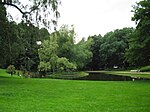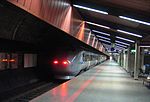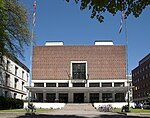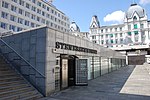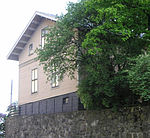Royal Palace, Oslo
1849 establishments in NorwayBuildings and structures in OsloHouses completed in 1849Official residences in NorwayPalaces in Norway ... and 3 more
Royal Palace, OsloRoyal residences in NorwayTerminating vistas

The Royal Palace (Norwegian: Slottet or Det kongelige slott) in Oslo was built in the first half of the 19th century as the Norwegian residence of the French-born King Charles III John, who reigned as king of Norway and Sweden. The palace is the official residence of the current Norwegian monarch while the Crown Prince resides at Skaugum in Asker west of Oslo. The palace is located at the end of Karl Johans gate in central Oslo and is surrounded by the Palace Park with the Palace Square in the front.
Excerpt from the Wikipedia article Royal Palace, Oslo (License: CC BY-SA 3.0, Authors, Images).Royal Palace, Oslo
Slottsplassen, Oslo Sentrum
Geographical coordinates (GPS) Address Website External links Nearby Places Show on map
Geographical coordinates (GPS)
| Latitude | Longitude |
|---|---|
| N 59.916911111111 ° | E 10.727566666667 ° |
Address
Det kongelige slott
Slottsplassen
0010 Oslo, Sentrum
Norway
Open on Google Maps

